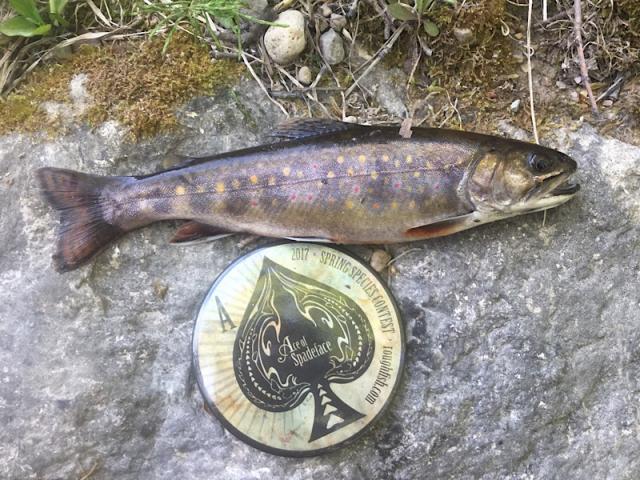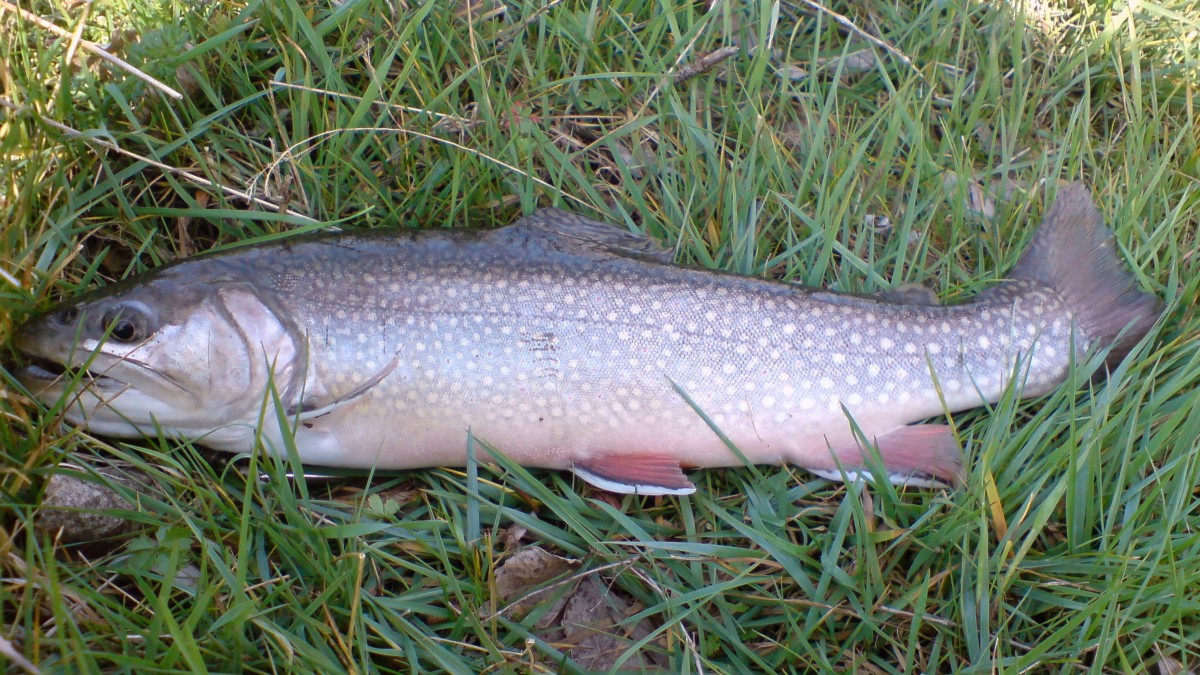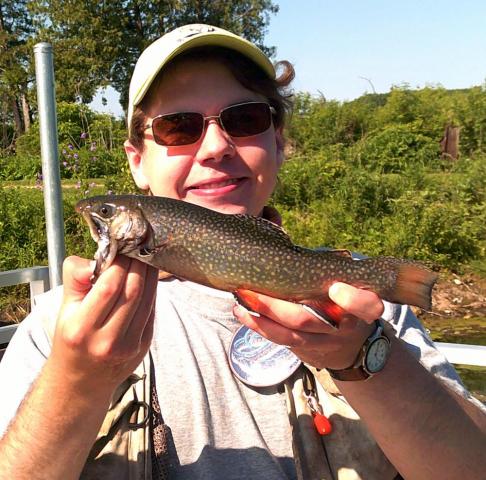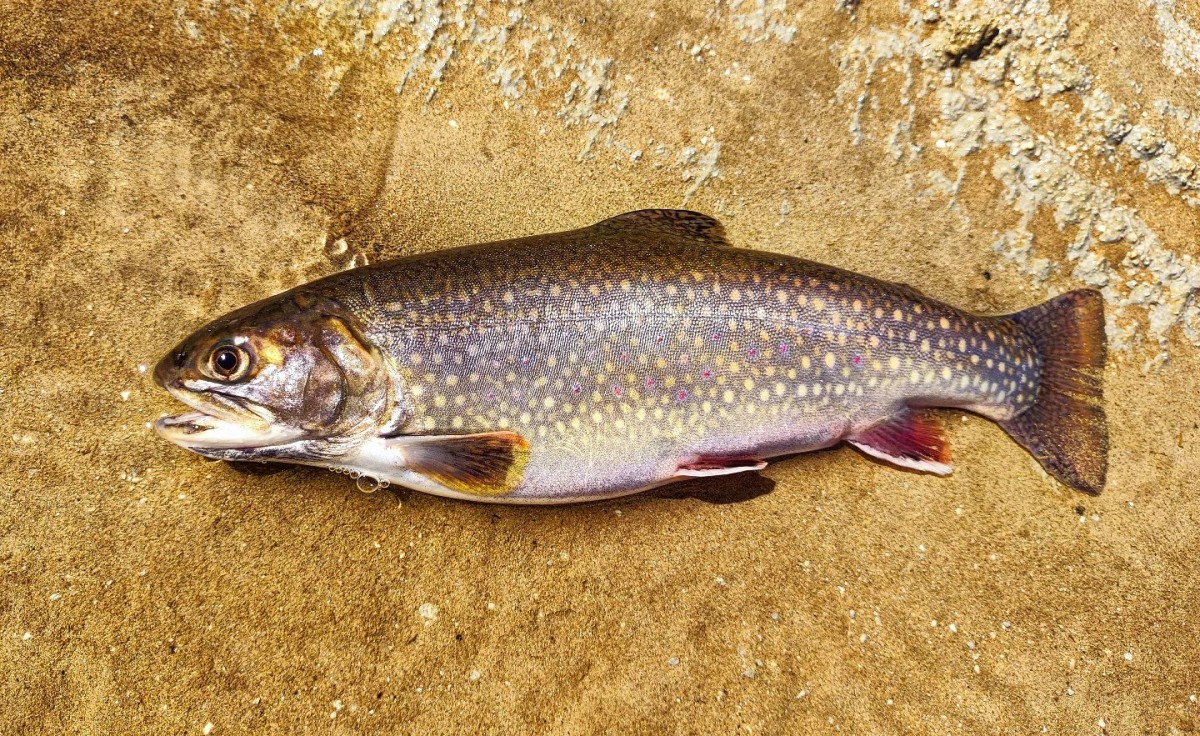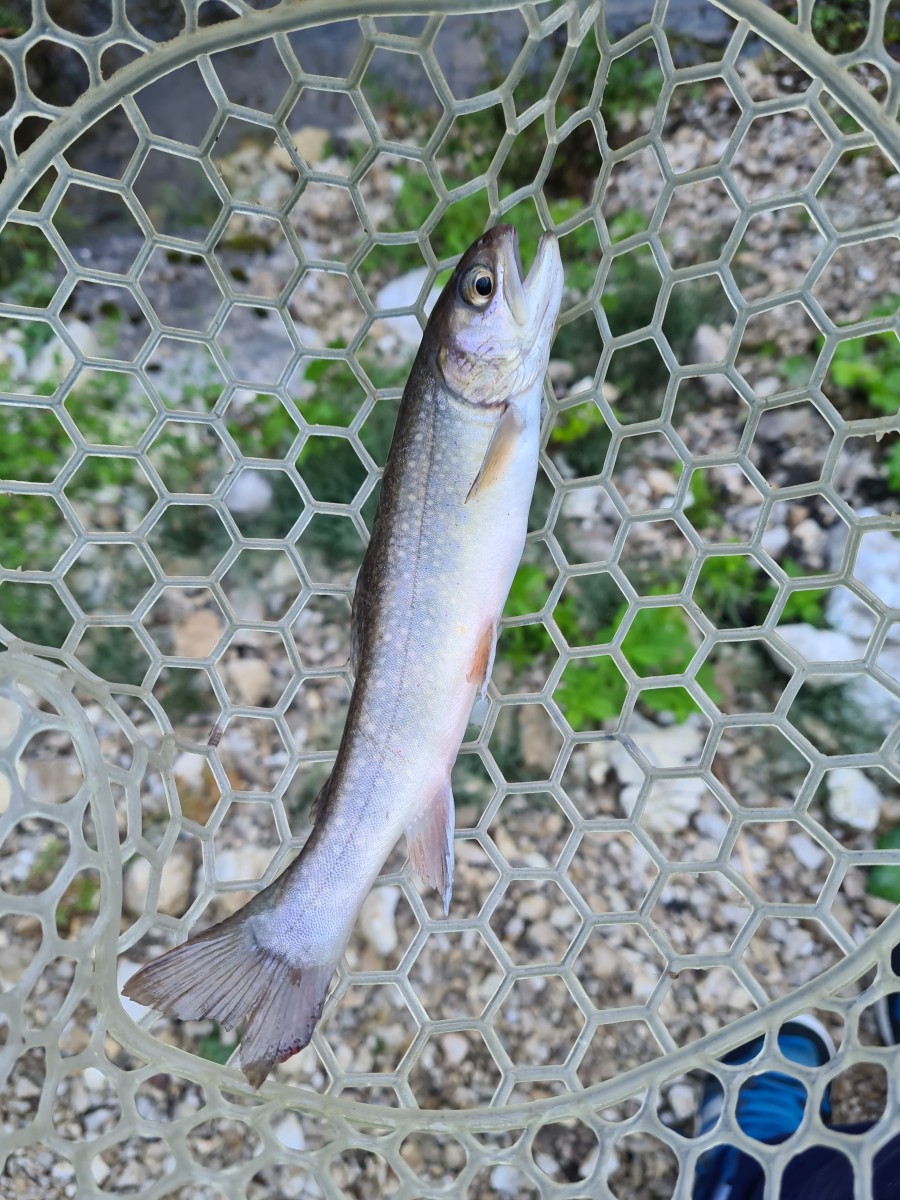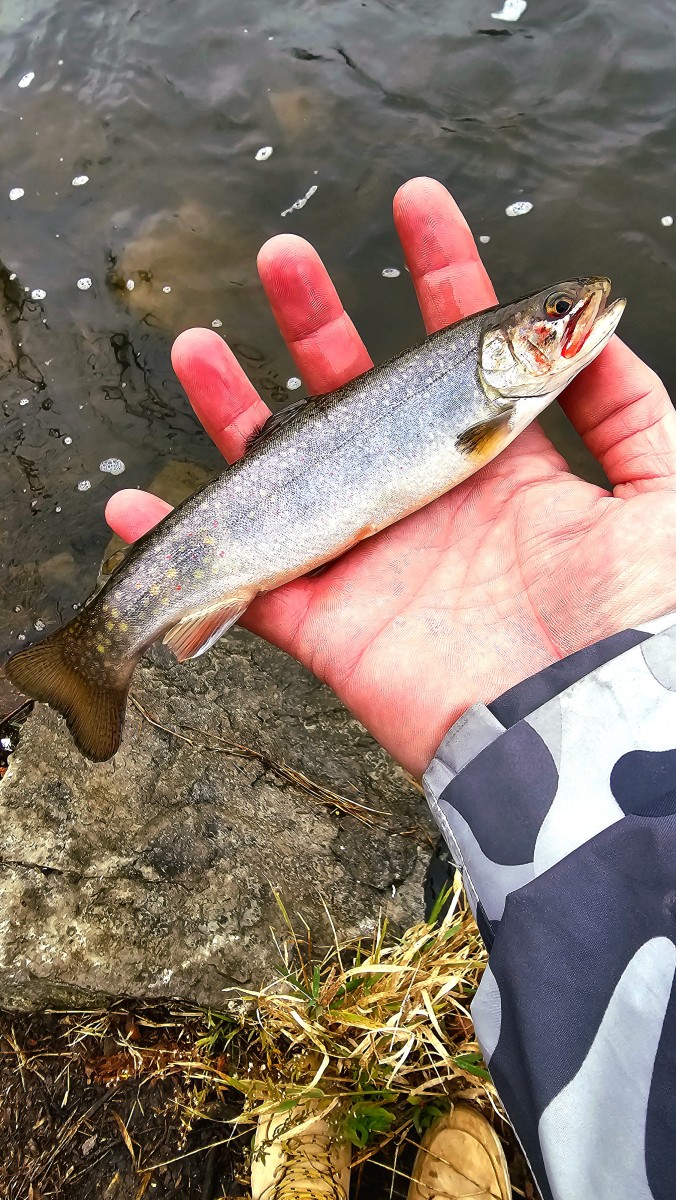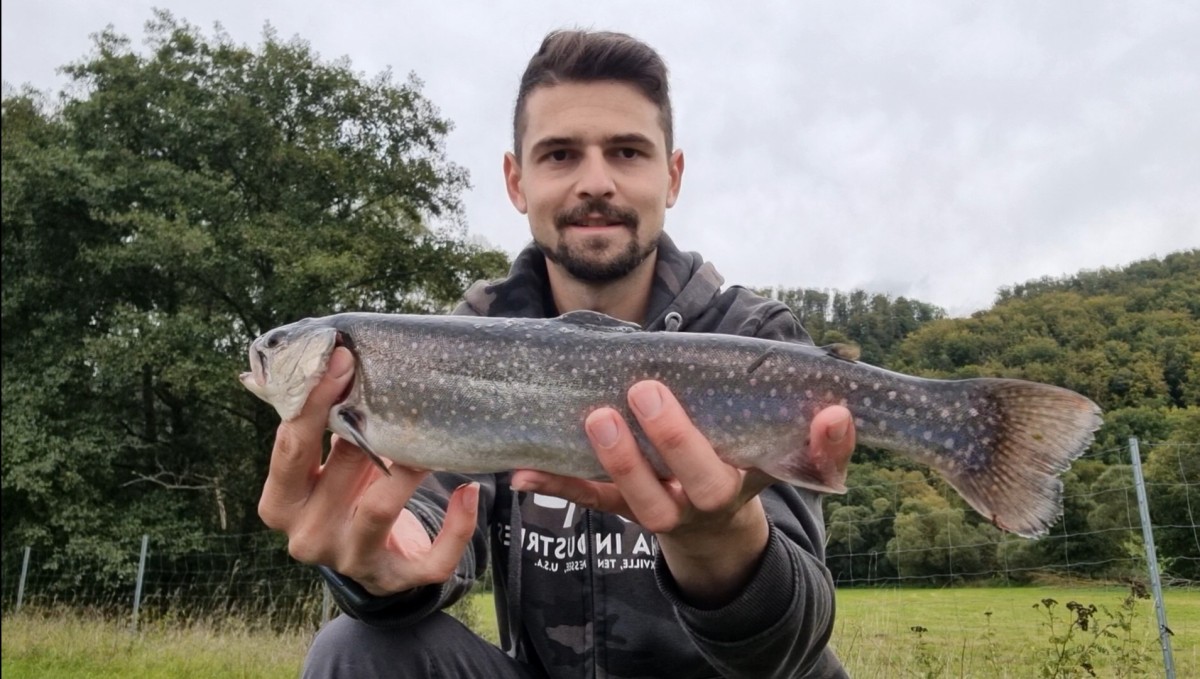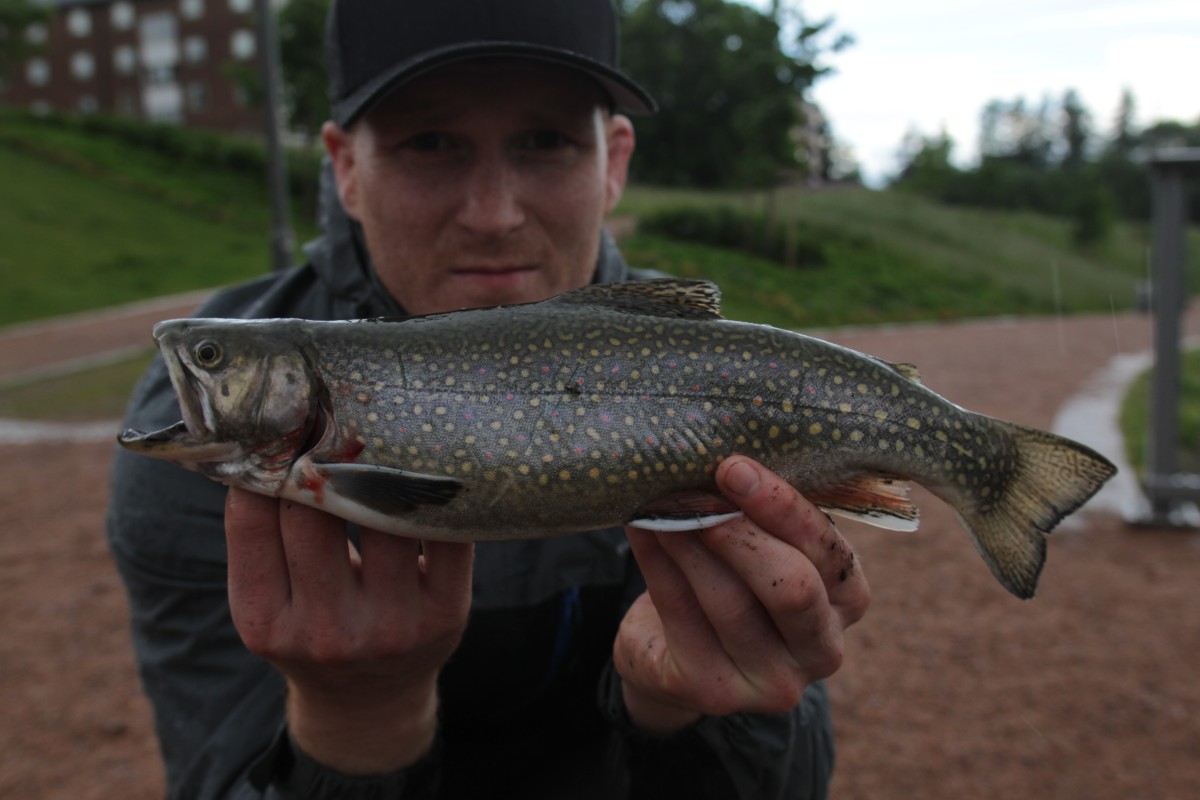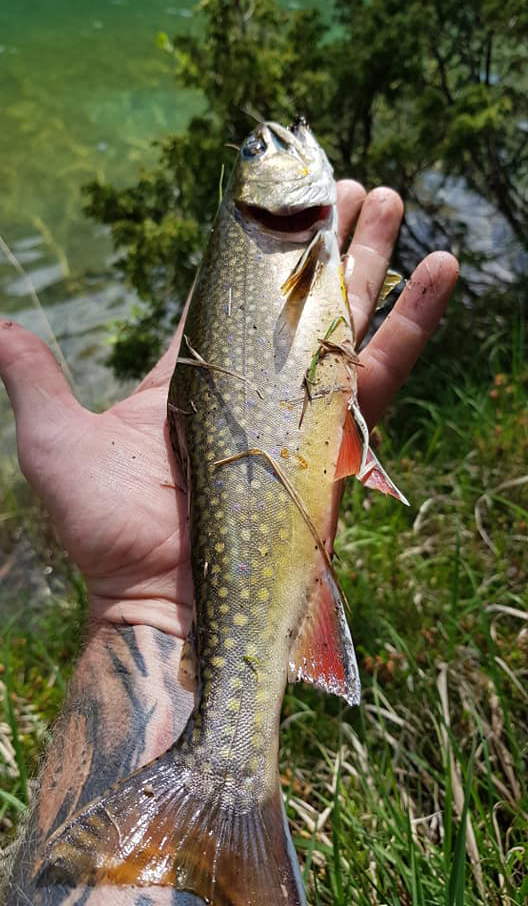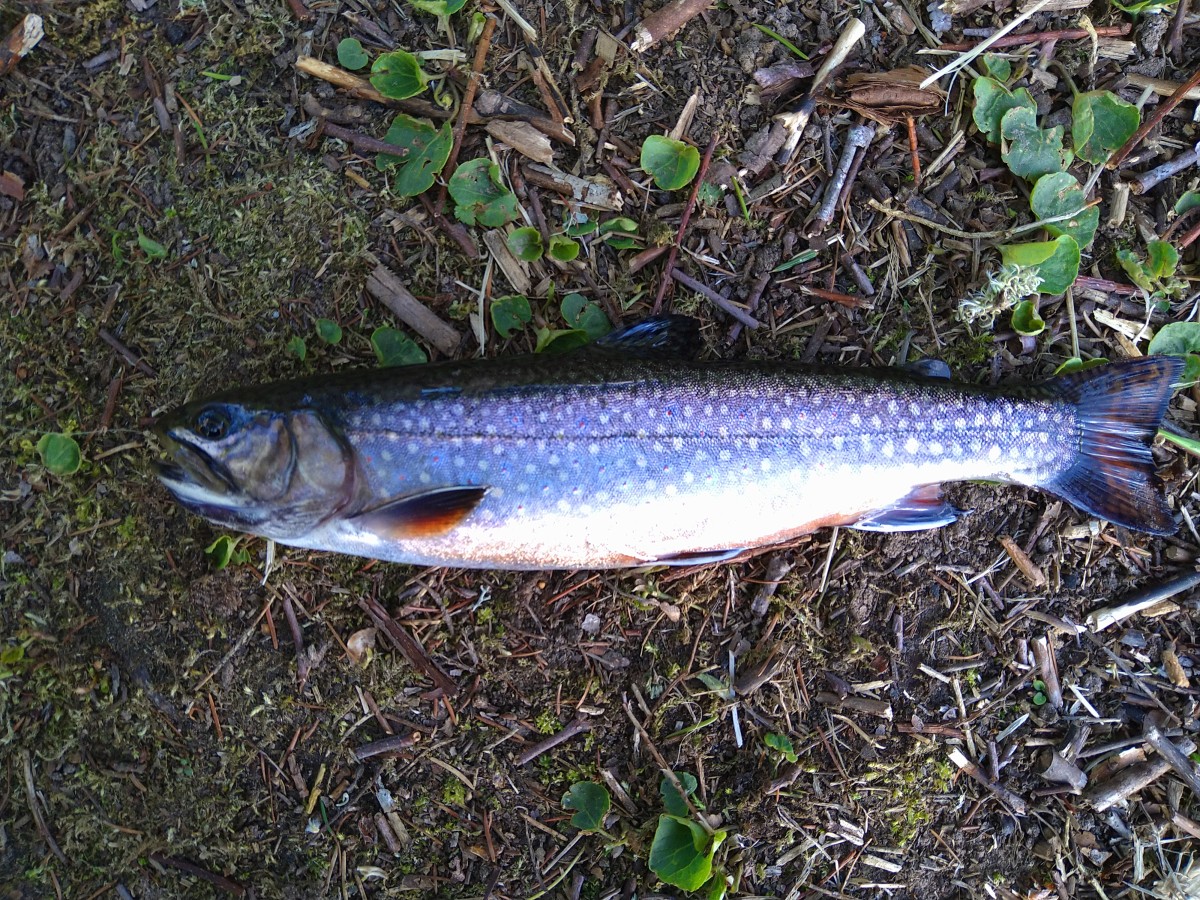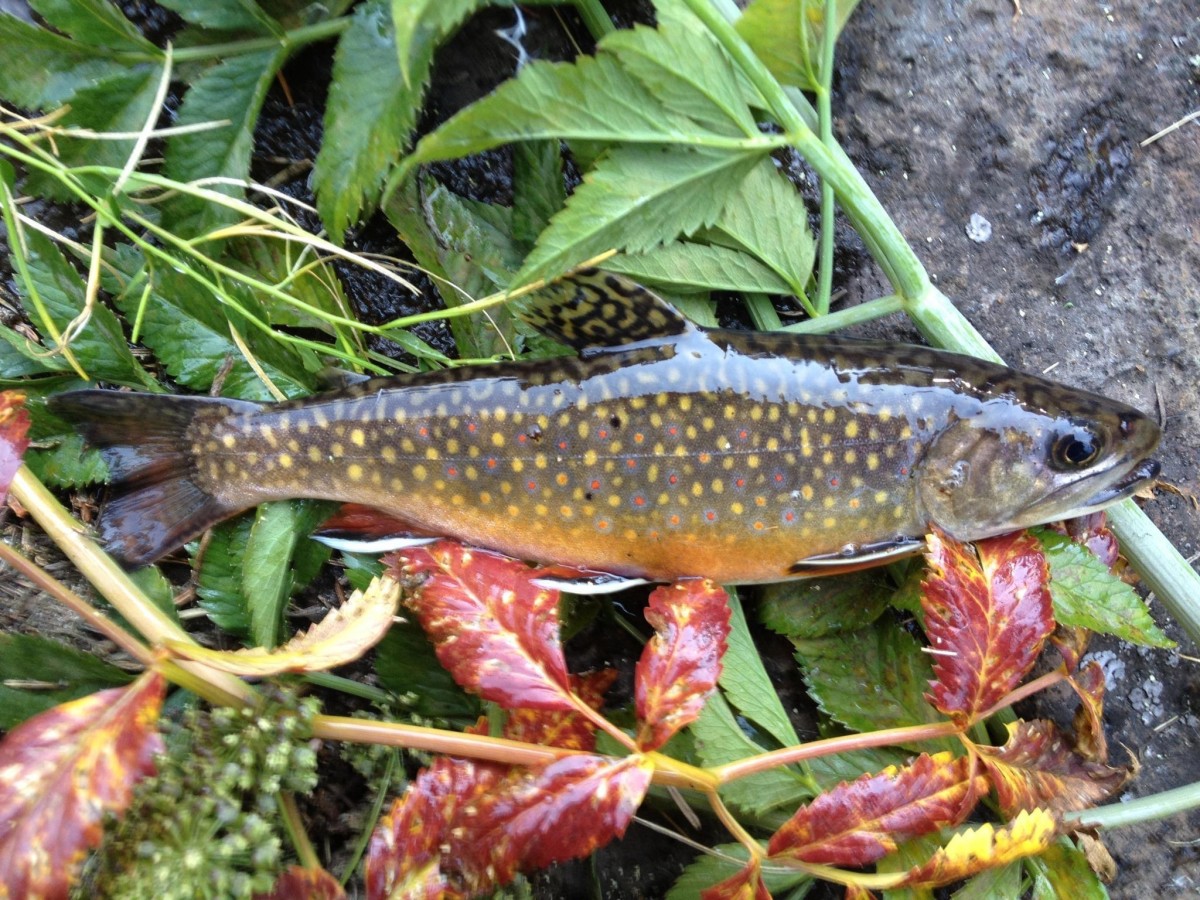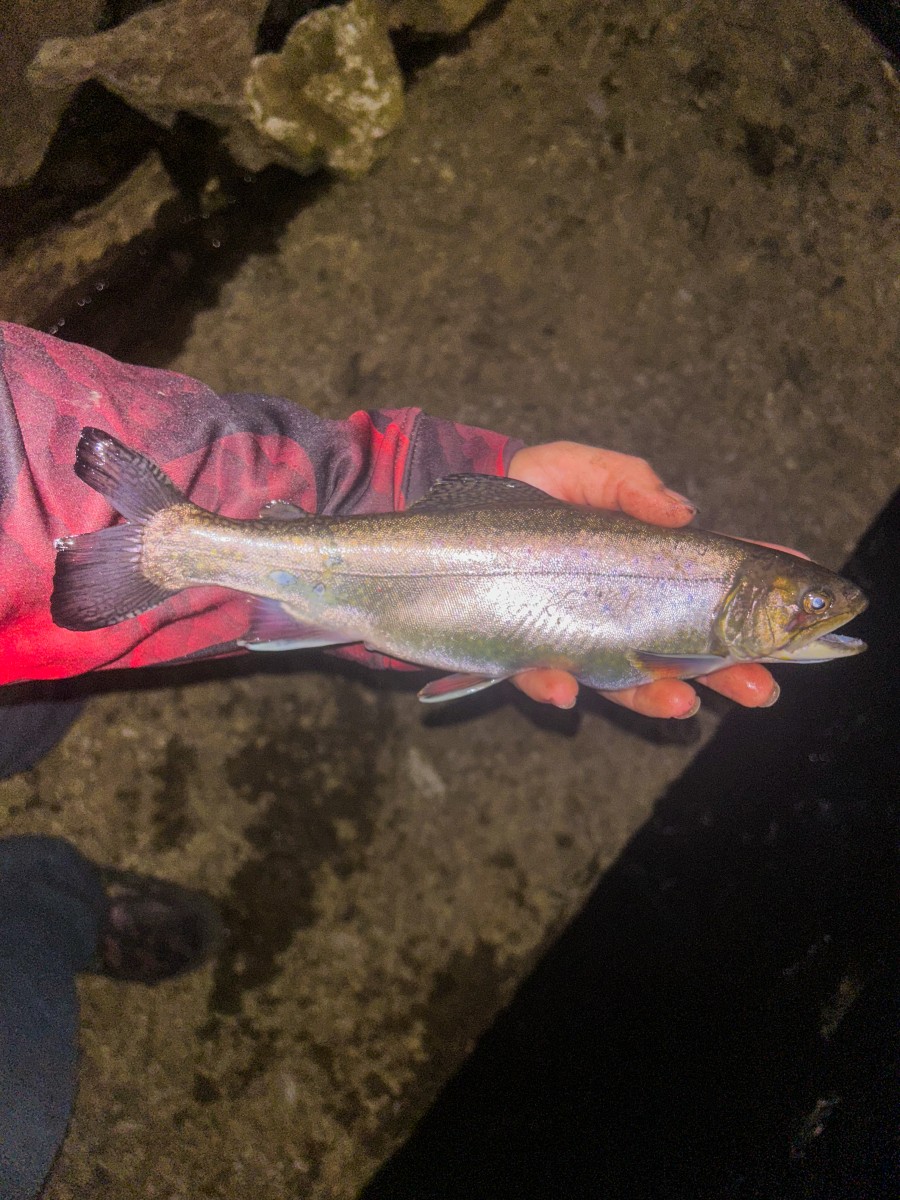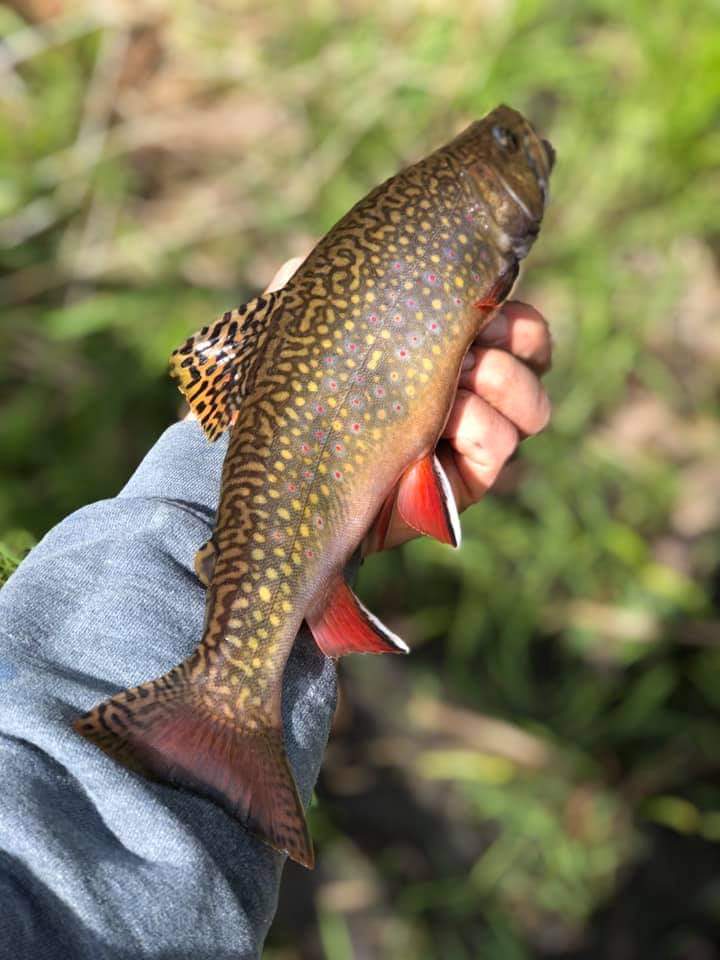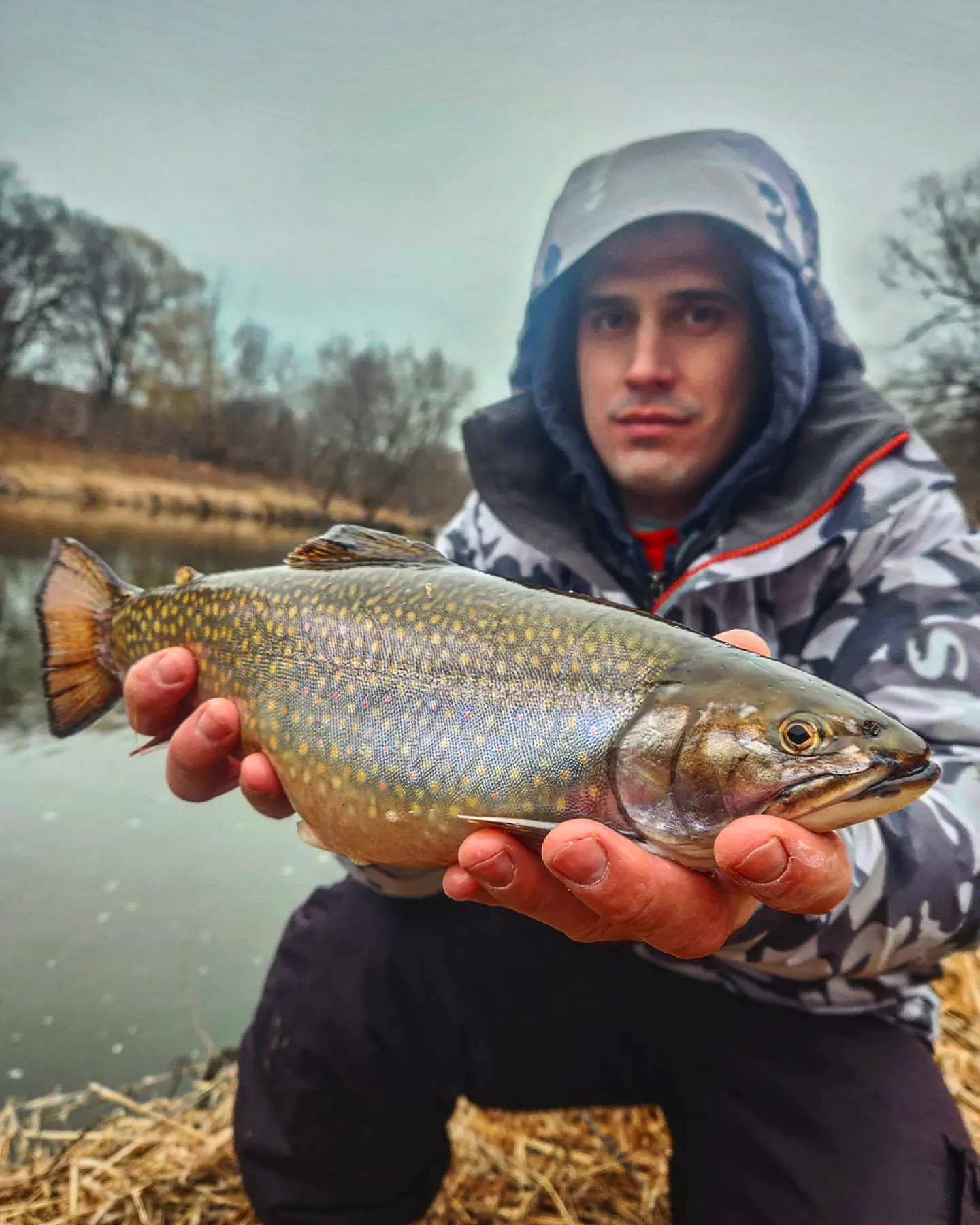Brook trout
(Salvelinus fontinalis)
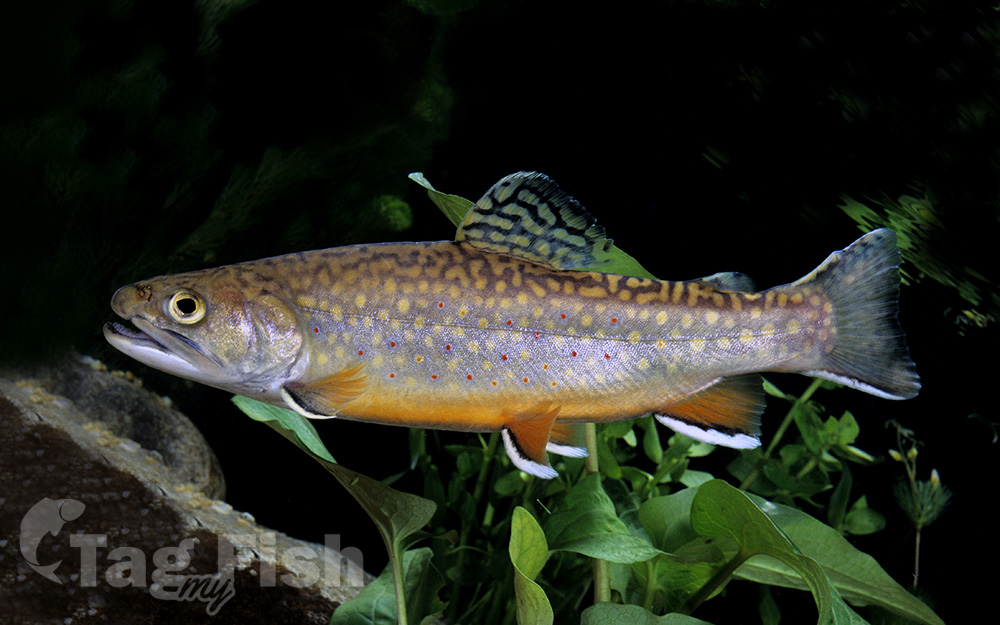
Classification
General data
The brook trout (Salvelinus fontinalis) is a species of freshwater fish in the char genus Salvelinus of the salmon family Salmonidae. It is native to Eastern North America in the United States and Canada, but has been introduced elsewhere in North America, as well as to Iceland, Europe, and Asia. In parts of its range, it is also known as the eastern brook trout, speckled trout, brook charr, squaretail, brookie or mud trout, among others.
A potamodromous population in Lake Superior, is known as coaster trout or, simply, as coasters.
Anadromous populations which are found in coastal rivers from Long Island to Hudson Bay are sometimes referred to as salters.
The brook trout is the state fish of nine U.S. states: Michigan, New Hampshire, New Jersey, New York, North Carolina, Pennsylvania, Vermont, Virginia, and West Virginia, and the Provincial Fish of Nova Scotia in Canada.
Description
The brook trout has a dark green to brown color, with a distinctive marbled pattern (called vermiculation) of lighter shades across the flanks and back and extending at least to the dorsal fin, and often to the tail. A distinctive sprinkling of red dots, surrounded by blue halos, occurs along the flanks. The belly and lower fins are reddish in color, the latter with white leading edges. Often, the belly, particularly of the males, becomes very red or orange when the fish are spawning.
Typical lengths of the brook trout vary from 25 to 65 cm (9.8 to 25.6 in), and weights from 0.3 to 3 kg (0.66 to 6.61 lb). The maximum recorded length is 86 cm (34 in) and maximum weight 6.6 kg (15 lb).
Brook trout can reach at least seven years of age, with reports of 15-year-old specimens observed in California habitats to which the species has been introduced.
Growth rates are dependent on season, age, water and ambient air temperatures, and flow rates. In general, flow rates affect the rate of change in the relationship between temperature and growth rate. For example, in spring, growth increased with temperature at a faster rate with high flow rates than with low flow rates.
Range and habitat
Brook trout are native to a wide area of Eastern North America, but are increasingly confined to higher elevations southward in the Appalachian Mountains to northern Georgia and northwest South Carolina, Canada from the Hudson Bay basin east, the Great Lakes–Saint Lawrence system, the Canadian maritime provinces, and the upper Mississippi River drainage as far west as eastern Iowa. Their southern historic native range has been drastically reduced, with fish being restricted to higher-elevation, remote streams due to habitat loss and introductions of brown and rainbow trout. As early as 1850, the brook trouts range started to extend west from its native range through introductions. The brook trout was eventually introduced into suitable habitats throughout the western U.S. during the late 19th and early 20th centuries at the behest of the American Acclimatization Society and by private, state, and federal fisheries authorities. Acclimatization movements in Europe, South America, and Oceania resulted in brook trout introductions throughout Europe, in Argentina, and New Zealand. Although not all introductions were successful, a great many established wild, self-sustaining populations of brook trout in non-native waters.
Habitat
The brook trout inhabits large and small lakes, rivers, streams, creeks, and spring ponds. They prefer clear waters of high purity and a narrow pH range and are sensitive to poor oxygenation, pollution, and changes in pH caused by environmental effects such as acid rain. The typical pH range of brook trout waters is 5.0 to 7.5, with pH extremes of 3.5 to 9.8 possible. Water temperatures typically range from 34 to 72 °F (1 to 22 °C). Warm summer temperatures and low flow rates are stressful on brook trout populations — especially larger fish.
Coasters
A potamodromous population of brook trout native to Lake Superior, which migrate into tributary rivers to spawn, are called coasters. Coasters tend to be larger than most other populations of brook trout, often reaching 6 to 7 lb (2.7 to 3.2 kg) in size. Many coaster populations have been severely reduced by overfishing and habitat loss by the construction of hydroelectric power dams on Lake Superior tributaries. In Ontario and Michigan, efforts are underway to restore and recover coaster populations.
Salters
When Europeans first settled in Eastern North America, semianadromous or sea-run brook trout, commonly called salters, ranged from southern New Jersey, north throughout the Canadian maritime provinces, and west to Hudson Bay. Salters may spend up to three months at sea feeding on crustaceans, fish, and marine worms in the spring, not straying more than a few miles from the river mouth. The fish return to freshwater tributaries to spawn in the late summer or autumn. While in saltwater, salters gain a more silvery color, losing much of the distinctive markings seen in freshwater. However, within two weeks of returning to freshwater, they assume typical brook trout color and markings.
